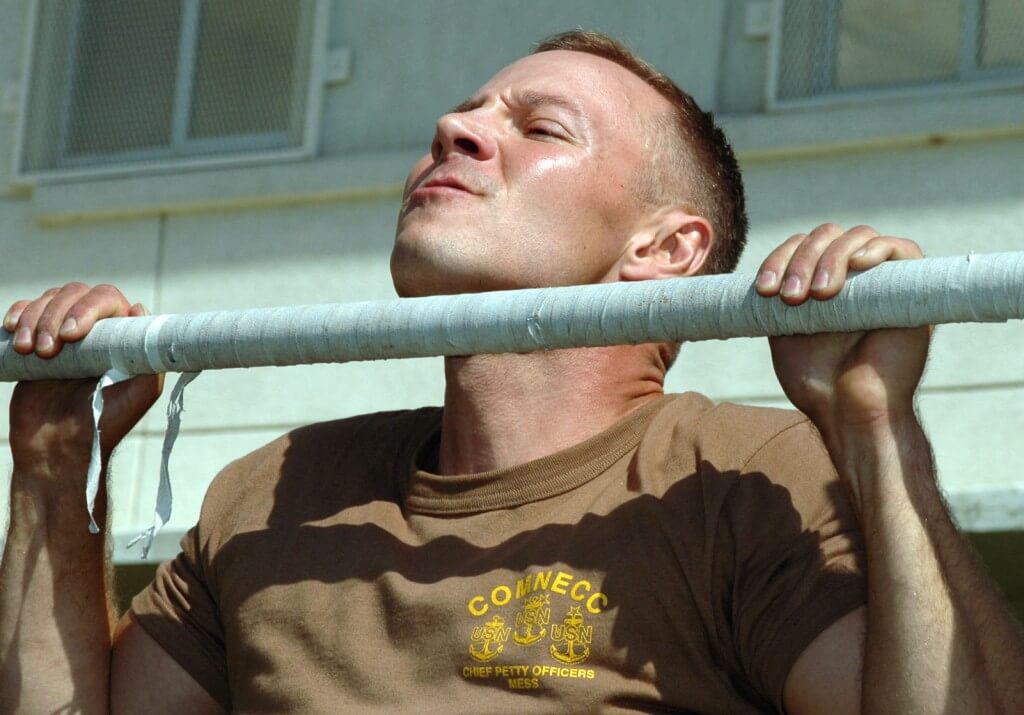How to Safely Perform Pull-Ups

By G. John Mullen
SANTA CLARA – The pull-up is a common exercise in swimming dryland programs. Yet, many swimmers do not perform them safely, with improper progressions and biomechanics (see this post for a proper pull-up progression).
Although other exercises can strengthen the shoulder, they don’t necessarily improve pull-ups. As Halet (2009) noted, no correlation existed between the lat pull-down and the pull-up in college female swimmers. Nonetheless, the pull-up can be an extremely effective exercise for the latissimus dorsi, one of the most main muscles for propulsion in swimming … if you know how to safely perform pull-ups. Therefore, progressing to the pull-up and having proper biomechanics are key for improvement.
Purpose:
The overall goal of the pull-up is to improve the strength of the latissimus dorsi and complementary shoulder musculature (rhomboids, infraspinatus, etc.).
Directions:
Start by grabbing the bar shoulder-width apart. If you grab further, the exercise will likely recruit more musculature from the infraspinatus and latissimus dorsi (Andersen 2014). Next, retract your shoulder blades, ensuring stability. This is important, as uncontrolled bar hanging or lowering can increase instability and damage at the shoulder. Pull your body up from your back, engaging this large musculature. Attempt to have your breast bone hit the top of the bar, then lower yourself slowly, not allowing your shoulders to rapidly separate. Remember, keep your shoulder blades squeezed and retracted during the entire movement.
If you wish to work the control of your shoulder blades, you can safely move them through protraction and retraction, a helpful prevention exercise, but for the pull-up keep them retracted and in a safe position!
Dryland for Swimmers: This product took me years to create and is still an evolving! In this book, you’ll find a thorough review of dryland for swimmers. It also contains an extensive video database, outlining how to each exercise properly. Lastly, this product outlines a year plan for dryland for an entire team, making a safe, progressive, and effective program for all ages! Click here and get your copy of Dryland for Swimmers today!
References:
- Halet KA, Mayhew JL, Murphy C, Fanthorpe J. Relationship of 1 repetition maximum lat-pull to pull up and lat-pull repetitions in elite collegiate women swimmers. J Strength Cond Res. 2009 Aug;23(5):1496-502.
- Andersen V, Fimland MS, Wiik E, Skoglund A, Saeterbakken AH. Effects of grip width on muscle strength and activation in the lat pull-down. J Strength Cond Res. 2014 Apr;28(4):1135-42. doi: 10.1097/JSC.0000000000000232.



